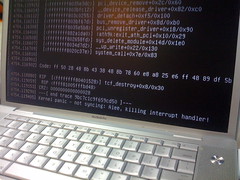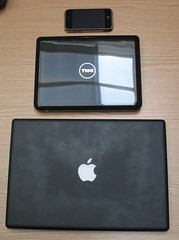Today’s personal computers basically run two distinct operating systems: the native host OS (Windows/Mac/Linux or iPhone/Android/etc) and the web.
Web apps have solved all kinds of problems that are still poorly handled by most native systems: apps automatically update every time you use them, they manage their own library dependencies, there’s a security sandbox that lets you run pretty much anything without concern that it’s going to eat your system (unless your browser is buggy!)
Let’s face it: most of us probably spend a lot of our time in the web, and even if they’re not doing everything that’s where a lot of action is. Some folks have used this as a sort of excuse for the extreme control some platforms exercise over software publishers – “don’t like the rules? Make a web app, you can do anything!”Â
But web apps are still much more limited in some areas. Access to hardware is rare (cameras, audio recording, scanners, attached storage). Communication between apps is greatly complicated by that sandbox, and shared data on the host machine like contact lists and photo archives may be completely inaccessible without a host-specific shim. (Most impressive thing I’ve seen is a bank web site that did deposit via scanned check image, using a signed Java applet to hook into native scanner support. It only worked on Windows, alas.) Background processing is very limited, and most web apps give up on directly notifying you of new activity and just send you email, hoping you’ve got something else that’ll tell you there’s new mail.
There’s a lot of great activity going on in and around HTML5 these days that’s getting better graphics support, faster code execution, etc. But the things that really bring the web native are going to be about access to shared hardware and data resources.
Some good things have been coming in such as touch and orientation events in Mobile Safari, but there’s a long way to go. My pet peeve: I find it pretty surprising that HTML file upload controls don’t trigger something useful like the camera roll on the iPhone/iPad or the Android browser. I can’t believe nobody has thought of this, so I’ll assume for now that the various browser folks just ain’t gotten to it yet… Anybody feel like starting on patches for Android’s Browser and the mobile branch of Firefox? :)




